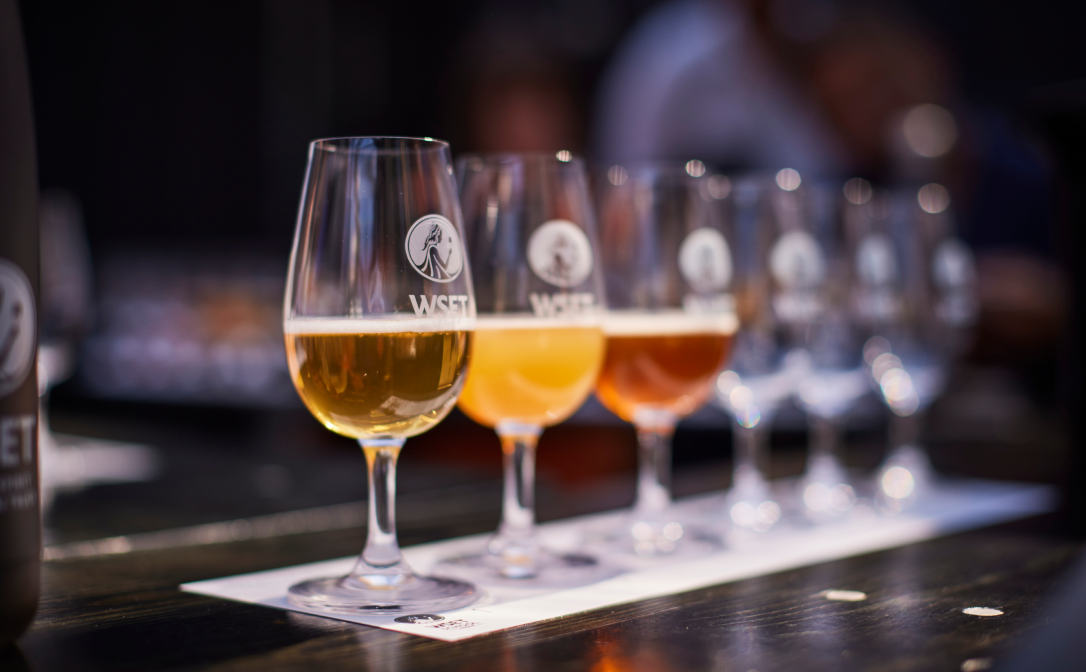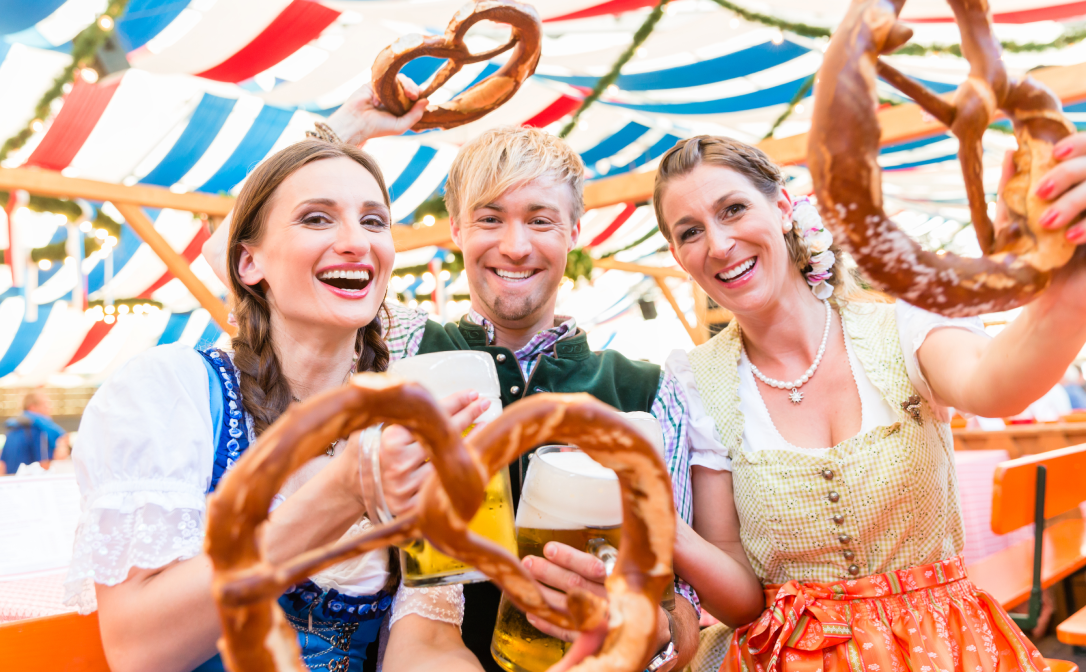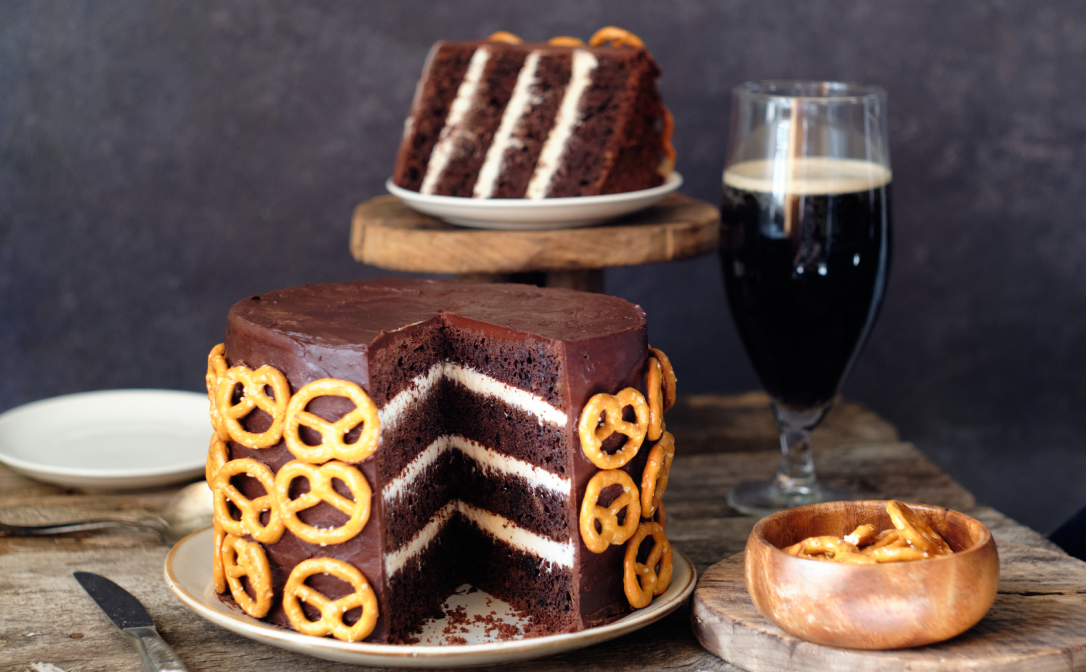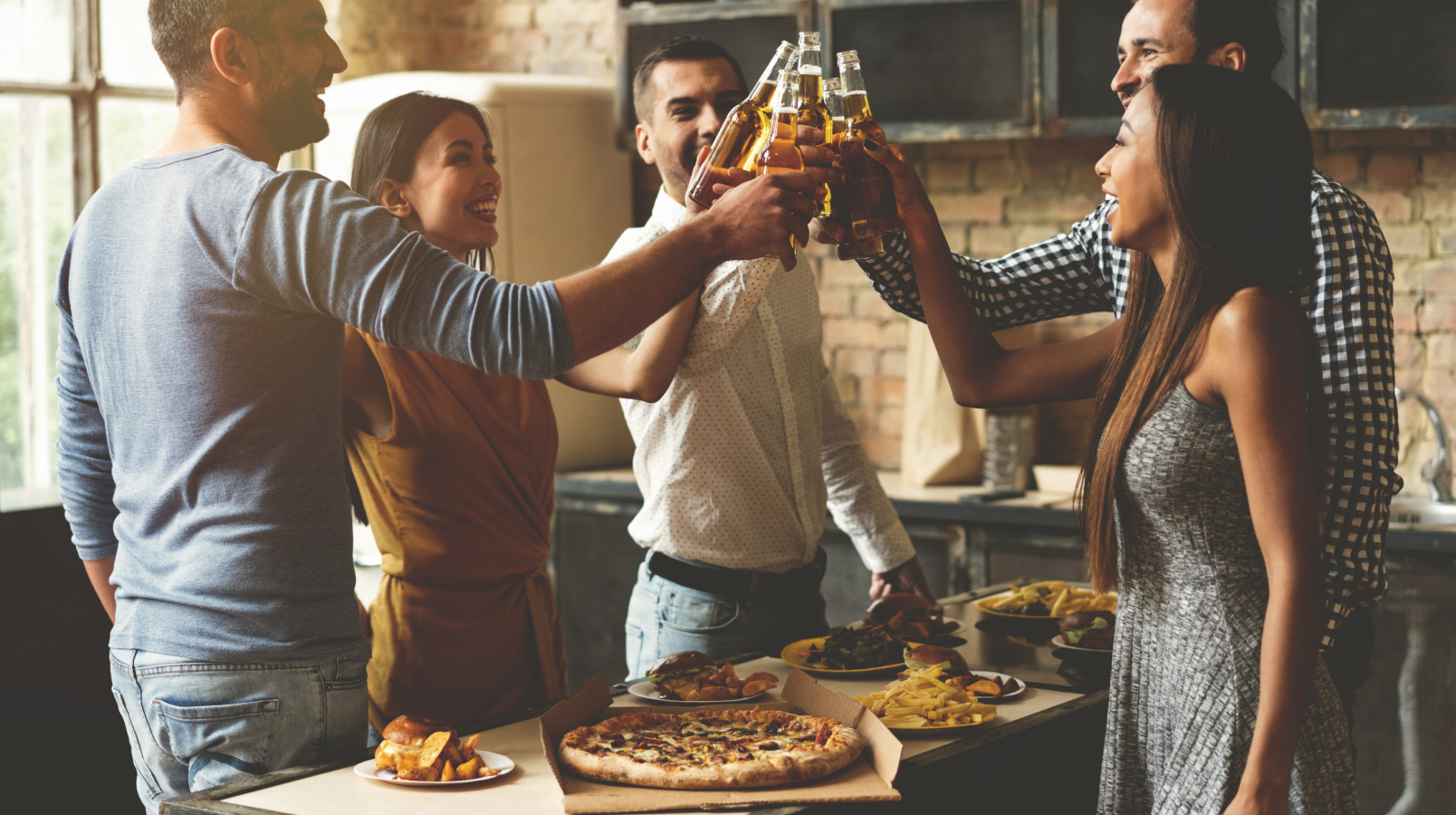Mastering the art of food and beer pairing allows you to transform any meal into a gastronomic occasion.
You can significantly enhance the flavours and textures of each dish by matching it with the perfect beer, which will enrich the overall enjoyment of the meal.
This guide highlights the key principles that underpin successful beer and food pairings. You will discover the best beers to serve with delicate starters, bold main courses and rich desserts.
We have also provided some classic food and beer combinations, along with some innovative pairing ideas to help you impress your guests.
Top tips for matching beer and food
Focus on intensity
Try to match strength with strength. Delicate dishes should be paired with light beers that will not overpower the flavour of the food. For example, a clean, refreshing pilsner will complement a salad or a simple seafood dish. A complex, powerful stout would overwhelm most seafood, but it should work well with an intense, savoury dish, such as a hearty stew or barbecued meat.
Find common flavours
Try to find a common flavour or aroma in the food and beer you are pairing. For instance, the citrus hops in an American IPA can complement a Thai curry. Meanwhile, the chocolate and coffee notes found in many stouts and porters make them ideal companions to rich desserts.
Create interesting contrasts
However, you should not be afraid to experiment with some interesting contrasts. A classic example involves pairing oysters with stout. It does not immediately sound like a match made in heaven, but the strong, briny flavour of the oysters will stand up to the rich profile and texture of a quality stout or porter, creating an exquisite contrast. You can get creative with your pairings, but just remember to match the intensity of the food and beer.
Consider five key qualities
Consider five key qualities when pairing food and beer: bitterness, carbonation, heat, richness and sweetness. These qualities can complement or offset one another to create a harmonious pairing. For example, carbonation can cut through rich foods and act as a palate cleanser, while malty sweetness can cool the heat of a spicy curry.
Pair beer with regional cuisines
Consider the origin of the beer and food. You may find shared flavour profiles between beer and food hailing from the same region. For instance, nutty brown ales from Somerset can be paired with mature cheddar cheese from the region. This does not necessarily apply to mass-produced lagers, but you can often find interesting symphonies between traditional food and craft beer from the same region.
Chill beer correctly
Ensure that the beer is served at the right temperature. If it is too cold, the flavours will be dulled. The aroma molecules will not be released, and the beer can come across as thin and tasteless. Conversely, if the beer is too warm, the aromas may escape before they can be fully appreciated, while the hop bitterness will be reduced and carbonation can decrease, making the beer taste flat. Channel your inner Goldilocks – not too hot, not too cold, but just right.
Match by colour
This is not a precise rule of thumb, but matching beer and food by colour can be a helpful starting point for beginners. Light beers tend to go well with light food, such as pilsner and steamed fish. Food often grows richer as it darkens – think of bread baking or meat roasting – and dark stouts and porters often work well with dark stews, dark meats and chocolate desserts.

Light beers tend to go well with light food, while dark stouts and porters often work well with dark stews.
Consider personal preferences when pairing beer and food
It is also important to consider personal preferences when pairing beer and food. These are some of the key factors that may impact your own preferences and those of your guests:
Your palate
Your individual taste buds perceive salt, acidity, bitterness, sweetness and umami flavours in unique ways, and that will inform your preferences. For instance, some people naturally prefer sweeter profiles, while others enjoy more bitter or savoury taste profiles.
Texture
Some beers are light, crisp and effervescent, while others are creamier and full-bodied. Your nervous system will detect these sensations, sending signals about the beer’s mouthfeel to your brain. The ideal levels of viscosity and acidity in a beer can vary from one drinker to the next.
Previous experiences
If you have had positive experiences with a particular pairing in the past, you will naturally be more inclined to seek out similar experiences in the future.
Generation
Beer preferences also vary from generation to generation. For instance, many older Brits are passionate about cask ale, whereas younger adults may prefer lager or citrussy, carbonated IPAs.
Adventurousnes
Some people stick to the classic combinations they know and love, whereas others are more willing to experiment with unconventional pairings.
Health factors
You may seek out gluten-free beers, vegan beers or beers that eschew certain ingredients, either for health reasons or personal preferences.
Cultural background
Your cultural background can impact your preferences. For example, Czechs may have an affinity for pilsners and some Belgians may enjoy a lambic beer.

Giant pretzels and beer are common sights during Oktoberfest in Munich.
Try to keep these factors in mind when pairing food and beer for yourself and for your friends and family.
How beer styles influence food pairing
There are lots of different beer styles, as explained in our guide to beer styles. Each style has a distinct flavour profile, which will influence how it pairs with food. These are some examples:
Traditional pilsner
The clean, crisp texture and mild bitterness ensures that these beers typically pair well with lighter foods such as salads, seafood and grilled chicken.
Witbier
The fruity, spicy flavours and sweet undertones can complement shellfish and sushi.
American IPA
The intense, hoppy bitterness will match bold flavours such as spicy foods, burgers, strong cheeses and grilled meats.
Amber ale
These beers often balance malty sweetness with moderate bitterness from the hops, and they can complement the caramelised flavours in roasted dishes.
Stouts and porters
The rich notes of coffee, caramel and chocolate pair well with chocolate desserts, rich stews and barbecued meat.
Berliner weisse
The tartness of the beer will often perfectly complement savoury dishes such as pickled vegetables, bratwurst or ceviche.
Barleywine
This rich, malty beer, with its high alcohol content, will stand up to strong, aged cheeses.
Classic beer and food combinations
Some classic combinations have withstood the test of time, from Batman and Robin to Han Solo and Chewbacca. The same is true of beer and food pairings. These are some of the most iconic combos of all time:
- Fish and chips with pale ale.
- Steak with porter.
- Bratwurst with German pilsner.
- Barbecued ribs with amber ale.
- Caesar salad with witbier.
- Ceviche with Berliner weisse.
- Spicy curry with American IPA.
- Grilled chicken with saison.
- Chocolate cake with stout.
These classic pairings adhere to the top tips provided above. They match the intensity of the food with the intensity of the beer, and they use the beer to enhance or complement the specific flavours and characteristics of each dish, creating harmonious pairings.

Not only is chocolate cake and stout a classic combination, some chocolate cake recipes also call for stout as one of the ingredients.
Innovative pairing ideas
If you would prefer to go off the beaten track and dazzle your guests with some weird and wonderful pairings, here are some ideas:
- Blue cheese with Belgian tripel.
- Sushi with sour ale.
- Smoked salmon and rauchbier.
- Thai curry with gose.
- Raspberry cheesecake with fruit lambic.
- Fruit cake with hefeweizen.
- Miso-glazed aubergine with saison.
There are endless possibilities at your disposal when matching food and beer. Don’t be afraid to let your creative juices flow when experimenting, as you can add a great deal of excitement to your meals.
Want to learn how to taste a broad range of beer styles? Join us for the WSET Level 1 Award in Beer.
This blog post was written by Martin Green. Martin is an experienced writer who has covered the beer, wine and spirits sector since 2012. He was appointed editor of trade magazine Drinks Retailing in 2015, and he then served as the editor of Drinks International from 2020 to 2022. Martin is now a freelance writer who provides regular content for publications such as Decanter, CBS and USA Today. He was also a judge at the International Beer Challenge from 2012 to 2020.


